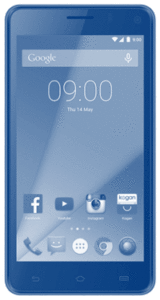If you talk about omnichannel or optimizing customer experiences, you have to talk about the role of the smartphone. It is becoming THE ubiquitous and predominant tool for both self-service and assisted service. Don’t believe me? Then let me share just a few of the hard facts about them.
 Pew Research Center says 77% of Americans have a smartphone. All demographics – age, gender, race, education, income, and geography – show ownership above 64% (and up to 93%) except the lowest education bracket (less than high school graduate) and senior citizens (65 and over). You can get the details on your customer demographics using Pew’s Mobile Fact Sheet.
Pew Research Center says 77% of Americans have a smartphone. All demographics – age, gender, race, education, income, and geography – show ownership above 64% (and up to 93%) except the lowest education bracket (less than high school graduate) and senior citizens (65 and over). You can get the details on your customer demographics using Pew’s Mobile Fact Sheet.
Only 40-50% of US households still have a landline. The Centers for Disease Control (yes, the CDC) tracks these numbers as a function of all the surveys they conduct. They now reach more people via cell phone than landline.
Google’s Consumer Barometer shows that 72% of Americans use a smartphone to access the Internet, and 65% access the Internet via smartphone at least as much as by computer.
We’re using speech-to-text to communicate with friends and family. And we do it for a reason: SPEED. Humans typically speak 110-160 words per minute (wpm). We type 40-80 wpm (if we’re good). Most of us can only text in the 20-40 wpm range (no matter how good you think you are). And we’re doing it because it works. Accuracy has improved to the point that word error rates in tools like Apple’s Siri, Microsoft’s Cortana, Google’s Assistant, or Amazon’s Alexa are at or approaching 5-6%.
Americans spend more minutes texting per day (26 minutes) than on calls (21 minutes) according to the International Smartphone Mobility Report by mobile data tracking firm Infomate.
ContactBabel tells us that callers navigate visual IVR menus 4 to 5 times faster than using a traditional IVR.
Finally, of the three launch pads for customer interaction, landline use is declining, computer use is flat, and smartphone use is growing. A high percentage of customers place calls using their smartphones. Itis also the likely place for them to start self-service efforts, whether in a Mobile App or Mobile Web, or even just a Google search to find a phone number.
Sadly, when looking at the “State of the SmartPhone” in the contact center industry, a bit of a deflated feeling fills the air. There’s not a whole lot of action despite all the benefits that this technology offers:
- Channel choice
- Low level of effort
- Ability to deliver personalized service
- Tools for proactive communication
- Successful interactions (a.k.a. closure)
It’s time to get moving on your smartphone offerings. Our recent article in Contact Center Pipeline (The Customer Journey in the Land of the Smartphone) can be your guide. We’re confident that if you offer it, they will come!
